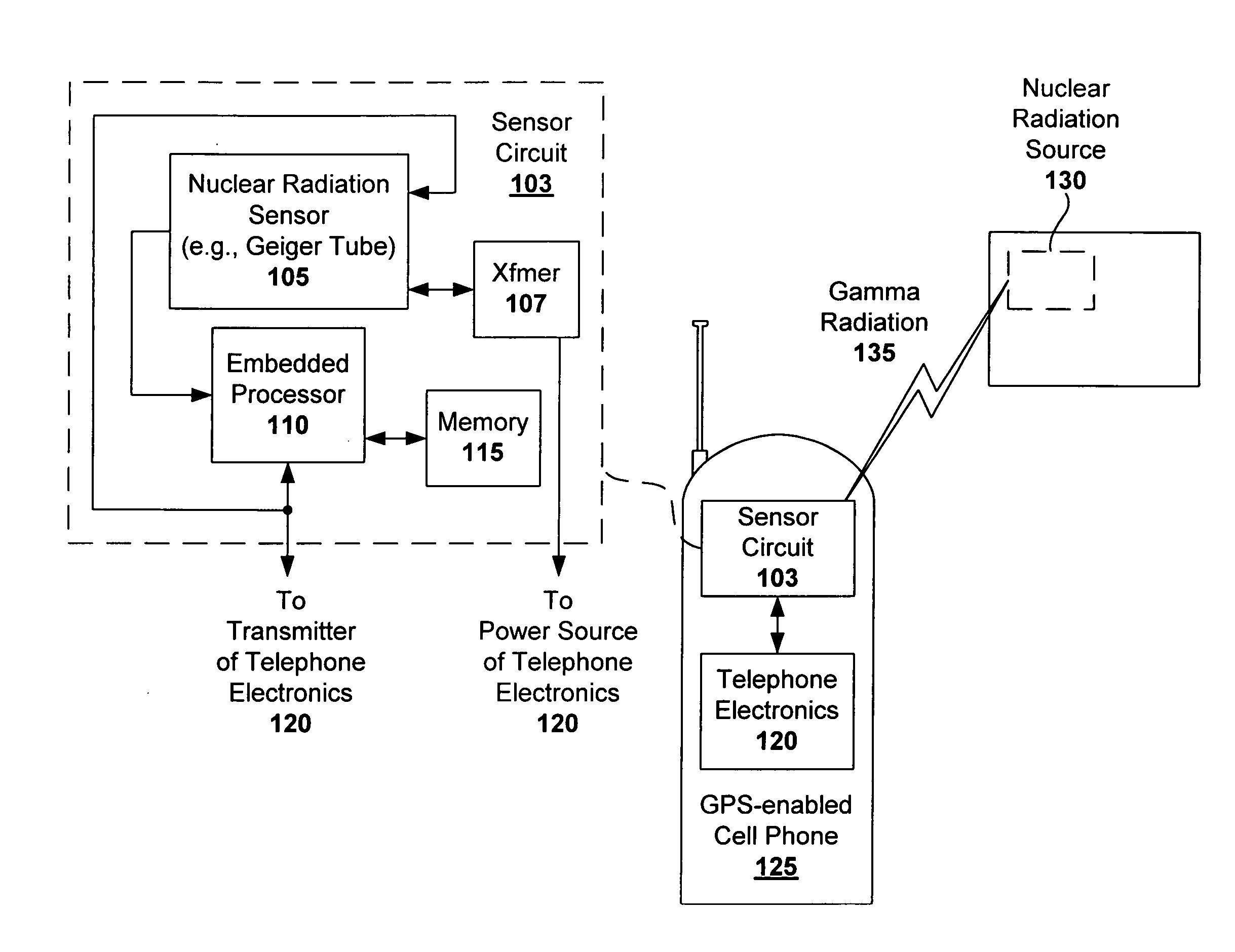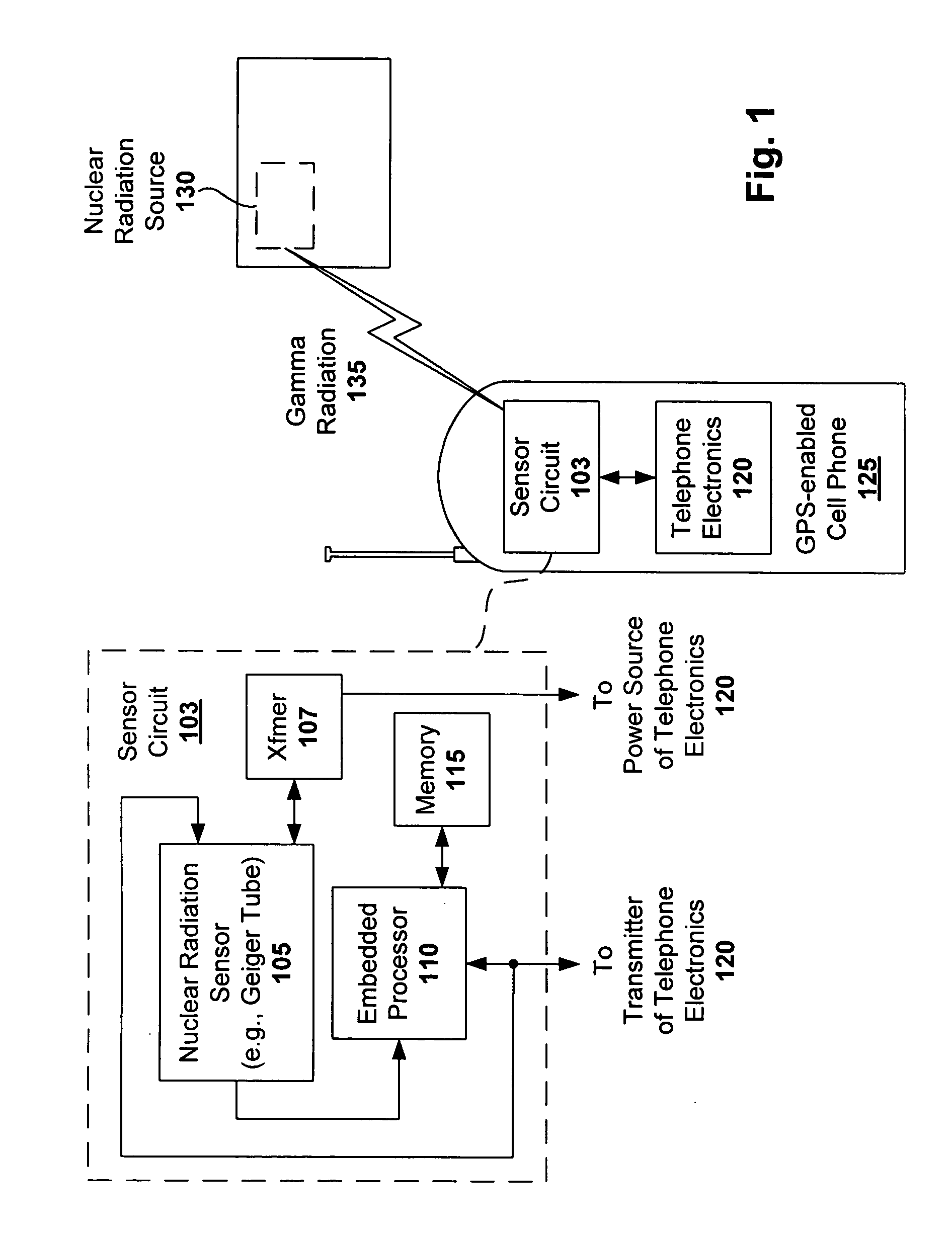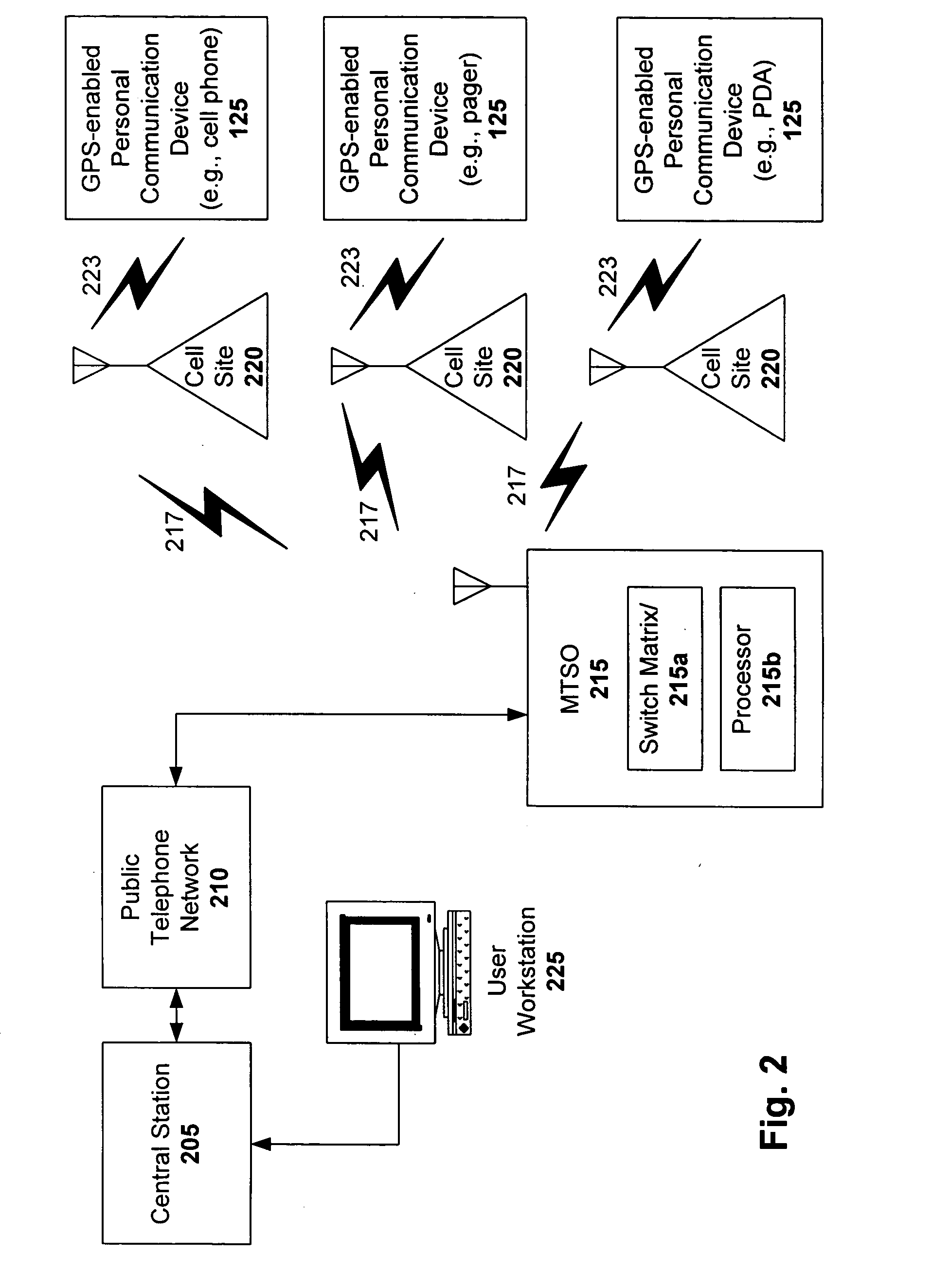Radiation detection and tracking with GPS-enabled wireless communication system
a wireless communication system and radio frequency technology, applied in the field of radiation detection, can solve problems such as new challenges, radiation poisoning, and threats of nuclear attack by devices
- Summary
- Abstract
- Description
- Claims
- Application Information
AI Technical Summary
Benefits of technology
Problems solved by technology
Method used
Image
Examples
Embodiment Construction
[0021] Embodiments of the present invention provide a system for detecting possibly hazardous radiation sources, and communicating the location of the radiation source to the proper authorities. In one such embodiment, the system includes a geographically-distributed network of discreet radiation detectors incorporated into GPS-enabled wireless personal communication devices, such as cell phones, satellite phones, pagers, BlackBerries or other mobile email devices, personal digital assistants (PDA), tablets, laptops, and any other electronic device that is or can be configured for wireless transmission of data to an associated public network without user intervention. By exploiting the ubiquitous nature of such electronic wireless devices, a comprehensive network of detection devices is provided that can alert authorities to the existence of radioactive material. In this sense, the invention effectively and harmlessly deputizes millions of citizens to assist the limited number of au...
PUM
 Login to View More
Login to View More Abstract
Description
Claims
Application Information
 Login to View More
Login to View More - R&D
- Intellectual Property
- Life Sciences
- Materials
- Tech Scout
- Unparalleled Data Quality
- Higher Quality Content
- 60% Fewer Hallucinations
Browse by: Latest US Patents, China's latest patents, Technical Efficacy Thesaurus, Application Domain, Technology Topic, Popular Technical Reports.
© 2025 PatSnap. All rights reserved.Legal|Privacy policy|Modern Slavery Act Transparency Statement|Sitemap|About US| Contact US: help@patsnap.com



